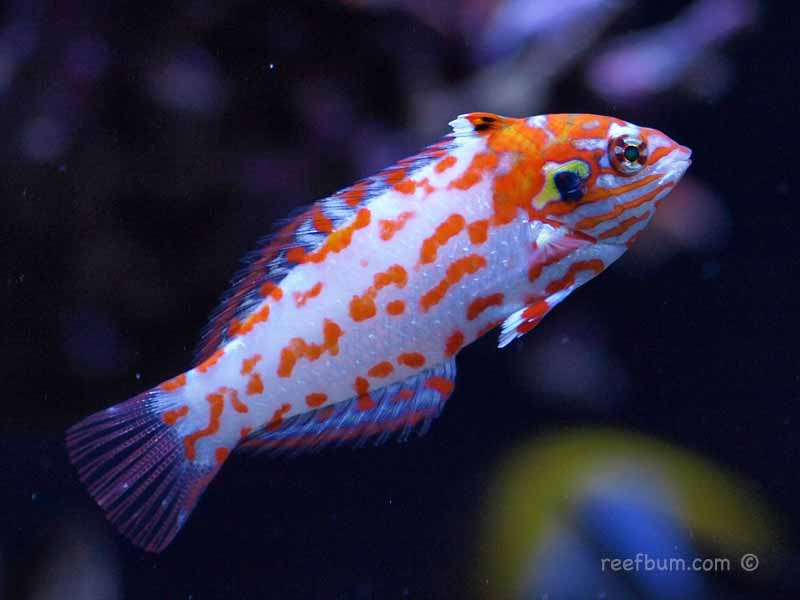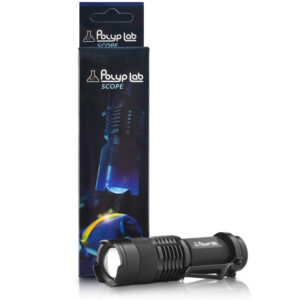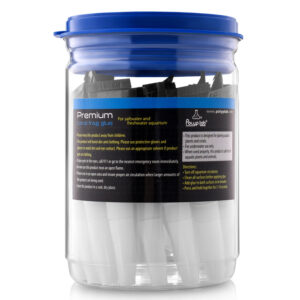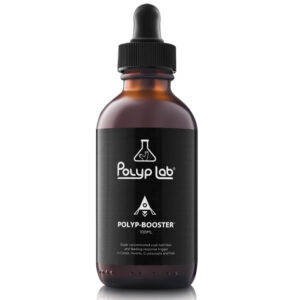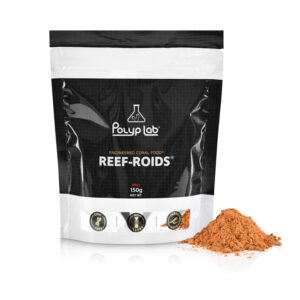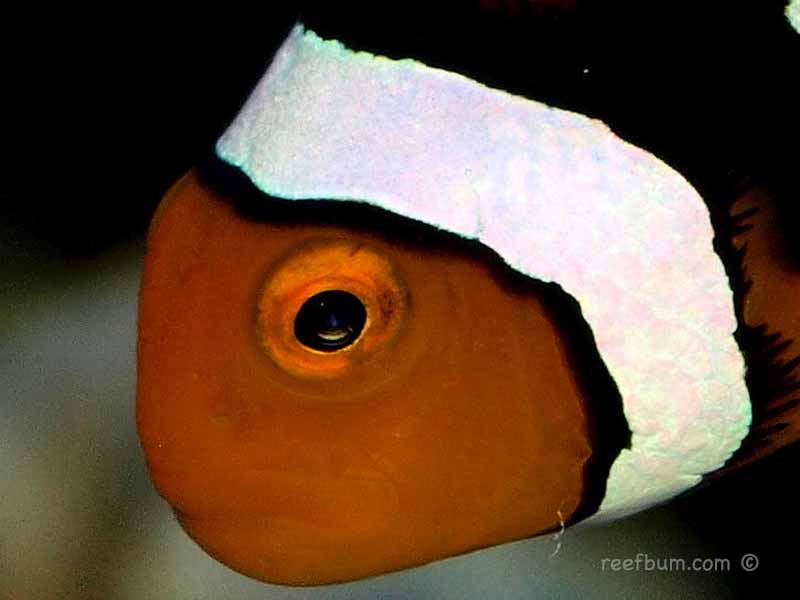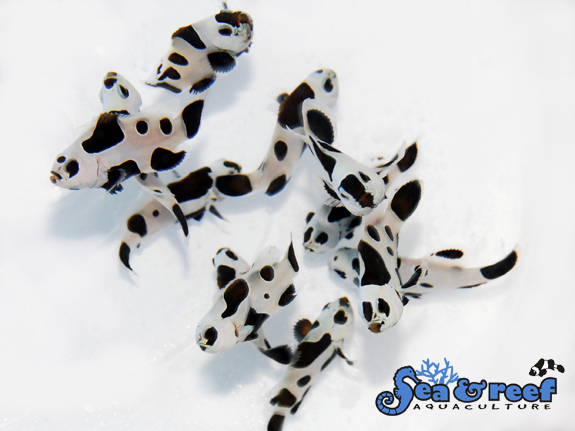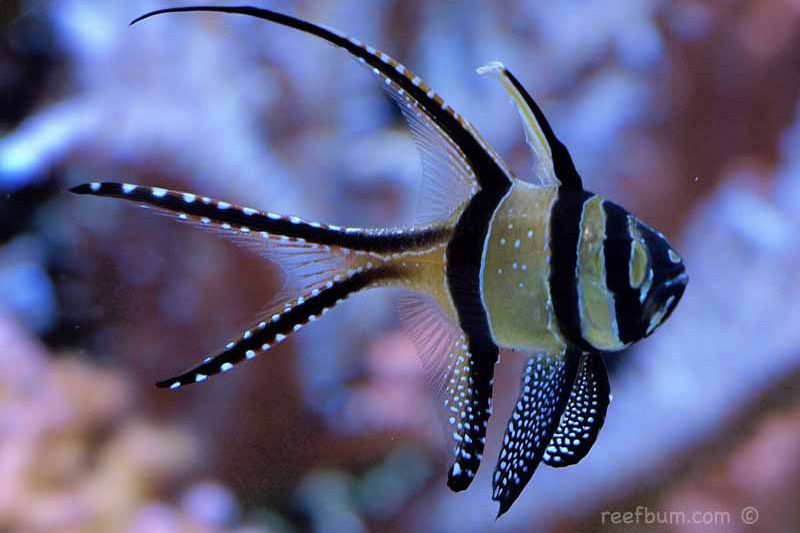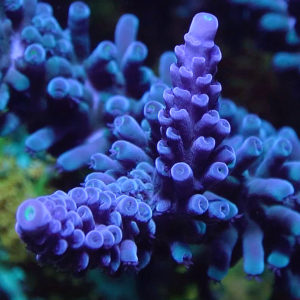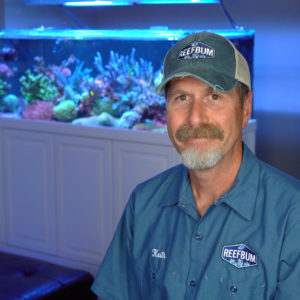Some reef keepers out there are considered wrasse guys or gals and feature as many of these beautiful creatures as they can in their reef tanks. I don’t consider myself to be a wrasse guy or wrasse head (excuse the pun, but I like the Grateful Dead) but I do come close. The different species of Leopard Wrasse have always fascinated me with their striking colors and detailed patterns and, as a result, have always roamed my reefs.
Generally, Leopard Wrasses can be tricky and difficult to keep but there are a few things one can do to optimize the chance for success. One key is having an established sand bed with a healthy pod population that will help keep these fish fat and happy. Leopard Wrasses do bed down at night in the substrate so the sand bed should be at least one to two inches deep. Additionally, tank size is important since Leopard Wrasses do like to roam and hunt for their food so I would recommend having at least a 100 gallon tank.
Leopard Wrasses also have a reputation as jumpers so some folks do keep screens over their tanks to keep them from carpet surfing. I have always had euro-braced tanks (without screens) and never had one jump (knock on wood) so perhaps having a glass ridge at the top is beneficial. My hesitation in using a screen is that it is a bit of an eyesore.
Key to Success – Acquiring a Healthy Leopard Wrasse
Finding a healthy specimen is critical so it is very important to find one that is eating at the store. You should also closely examine the fins to make sure there are no tears and study the mouth to see if there are any scrape marks. Wrasses transported in plastic bags without sand might scrape themselves by digging at the bottom of the bag looking to bury themselves, an act that can cause stress.
I have had the most success keeping Macropharyngodon meleagris (Black Spotted Leopard Wrasse), which is considered to be the most common species. One of my favorites is the Macropharyngodon bipartitus (African Leopard Wrasse), which has beautiful blue and red coloration with white spots. They have been a bit tougher for me to keep. In my last tank I had one of each species and they were best buds, following one another around the tank looking for food in all of the different nooks and grannies.
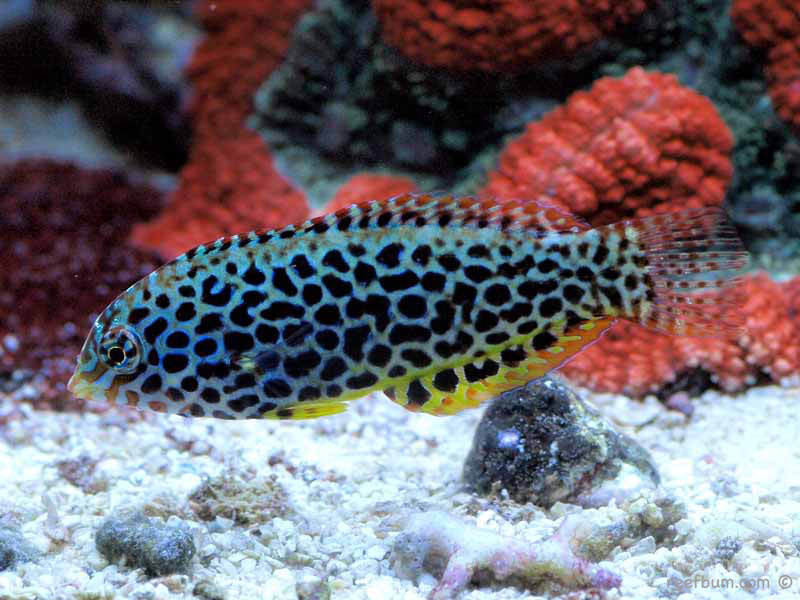
Macropharyngodon meleagris (Black Spotted Leopard Wrasse)
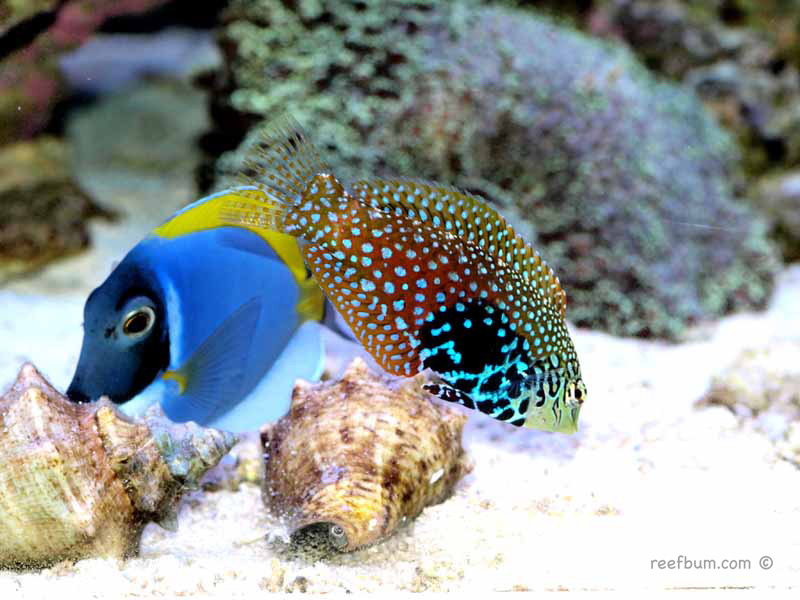
Macropharyngodon bipartitus (African Leopard Wrasse)
My Holy Grail Leopard Wrasse
My proudest wrasse keeping achievement was successfully caring for a Macropharyngodon Choati (Choati wrasse), twice! These guys are one of the hardest wrasses to keep in captivity but they are striking and I considered it to be the crown jewel of my wrasse collection in my 225 gallon tank. I found one that was quarantined for weeks by the supplier, who was able to get it to eat on a consistent basis. Quarantining a fish is always a good idea once a fish is brought home so that will certainly increase the chance for success.
A couple of months ago I was fortunate to acquire one for my current 187 gallon reef. When this fish arrived it was skin and bones and would not eat prepared food for at least four weeks. I thought it was going to be a goner but every day it kept showing up when the lights turned on. It must have been surviving on pods but to give it a better chance to live I added even more pods to the tank as well as some live baby brine shrimp. The strategy paid off as this beauty started to take prepared food, which consisted of LRS Reef Frenzy, LRS Reef Herbivore, frozen mysis shrimp and brine shrimp. Today it is a happy camper, eating like a pig!
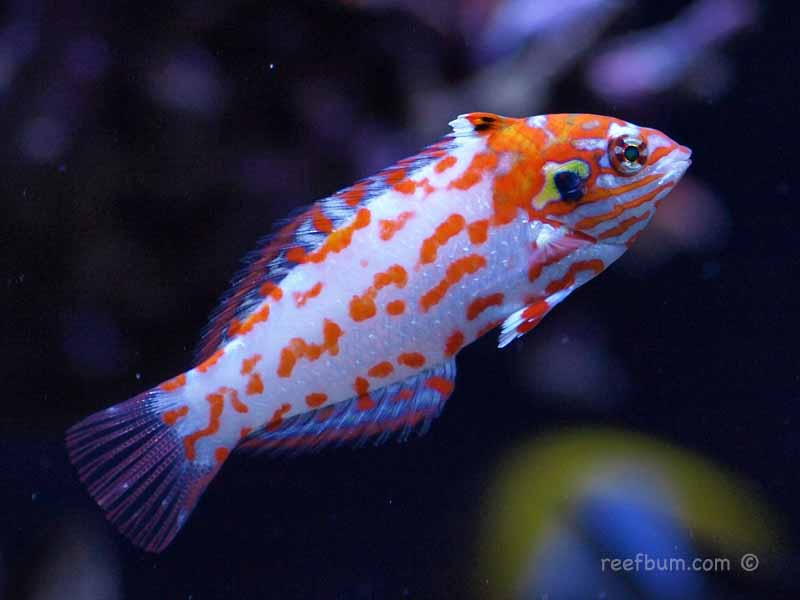
Macropharyngodon Choati (Choati wrasse)
Additional Resources
If you would like some help with a new tank build, including help designing a custom aquarium, or help re-configuring your current setup then you can visit this page for more information. And if you are looking to add some equipment, I do sell GHL, Pax Bellum, Reef Octopus Calcium and Kalk Reactors and Royal Exclusiv products, including Dreamboxes, which is the equipment I use and recommend. I also sell Reef Brite metal halide and LED fixtures as well as Maxspect & IceCap Gyres.
As for additional insights and information, please explore my many other reef tank and SPS related articles as well as my YouTube channel. For an even deeper dive into reef tank care you can check out my Reef Keeping Master Class. This online course is an immersive and one of a kind educational tool designed to help reef aquarium hobbyists build and maintain a beautiful SPS reef tank. The course is a series of video presentations with some supplemental video from my YouTube channel. There are also quizzes to help students retain and understand the information presented in the course.
Need some frags…..I can help with that as well 🙂 Please visit my SPS Frag store to see what is available.

